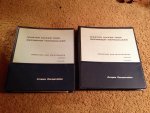lonewhitefly
Active member
Here's a wrinkle though, the terminals on the backs of the heads are labeled "1" and "2", but that doesn't mean those connect to cores 1 and 2 as you count from top to bottom...since they are 2-track heads its possible that "1" is the first core at the top, and "2" *could* be the third core...that would explain why there are guard bands between the 1st, 2nd and 3rd cores of the erase head, but not between the 3rd and 4th cores. I would expect if the 1st and 2nd cores were the ones utilized there would only be a guard band between cores 1 and 2.
Also, I think it is reasonable to assume there used to be a play head mounted...there is a head can cover there for the play head on the gate, and burnishing of the machine marks of the mounting block where a head can was mounted. Plus the second scrape flutter idler is in place which really would be superfluous if there never was a play head mounted.
I think it should assumed there was a play head at some point.
Wish I knew of a way to test which terminals on the heads went to which cores...
Yeah, but its NOT a 1" 4-track setup. Its basically a 1" unidirectional quarter-track setup (i.e. half of a quarter-track setup for 1" tape).
I think we're talking about the same thing with different terminology ... ('quarter-track' vs. '4-track') ... I always called it '4-track/2-channel' ...
But yeh there is no way to know if it was for cassette duplication or 1/4" consumer reel duplication without knowing whether it's 1 & 3 or 1 & 2. But based on the guard bands you noted, it sounds like it was a dupe machine for 1/4" consumer reels. They probably used 1" for higher quality, or to use the same machine for 8-track duplication as I mentioned above perhaps.
But they play head -- whether it was attached to the same deck, or another -- would have to be standard 1" 4-track for playback ... (one 'side' would play forward, while the other plays backwards, to transfer to the 1/4" consumer reels). They may have used the 1" deck just to prepare the original masters, then made duplication masters on 1/4".
Standard duplication for 8-track cartridge masters used 1" tape. Quad & 4-track (or quarter-track) consumer reels used 1/2" 4-track masters I think (probably for cassette duplication as well). So this seems unusual to use 1" 4-track for 1/4" open reel or cassette duplication ... but that looks like this is what it was for (can't think of anything else, unless it was some crazy custom setup).
Last edited:



 and hook your scope to the ends of the wires. Youll find which track the terminals are hooked to PDQ.
and hook your scope to the ends of the wires. Youll find which track the terminals are hooked to PDQ.
